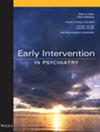Longitudinal Trajectories of Depression and Anxiety Among Chinese Adolescents in the Later Stage of the COVID-19 Pandemic
Abstract
Introduction
This study aimed to examine trajectories of depression and anxiety and predictors of these trajectories among Chinese adolescents in the later stage of the COVID-19 pandemic.
Methods
This study was a three-timepoint repeated cross-sectional survey with a nested longitudinal subsample. Data collection took place from April 2021 to June 2022. A total of 7529 Chinese adolescents completed the online questionnaire across three timepoints (50% male, mean age 13.89 years). Participants completed the Patient Heath Questionnaire (PHQ-9), Generalised Anxiety Disorder Scale (GAD-7), Adolescent Self-Rating Life Events Checklist (ASLEC), and self-developed questionnaire. Latent Growth Mixture Modelling was employed to investigate the heterogeneous trajectories of depression and anxiety, while multivariate logistic regression analysis was applied to examine predictors for trajectories.
Results
Three trajectories were identified: resilience group (55.6% depression and 63.7% anxiety), mild group (38.4% depression and 30.2% anxiety) and dysfunction group (6% depression and 6.1% anxiety). Predictors of the mild depression/anxiety group were female, study in public school, academic activities and social communication impacted by COVID-19. Female, lack of exercise, academic activities and social communication impacted by COVID-19 were also risk factors for dysfunction depression/anxiety group.
Conclusions
The patterns of depression and anxiety are different, and each trajectory is influenced by different predictors. Resilience group remains the most common outcome, while over one-third of adolescents exhibit mild and dysfunction symptoms, indicating the need for individualised intervention.


 求助内容:
求助内容: 应助结果提醒方式:
应助结果提醒方式:


